Moxibustion
How to submit an article:
- Registered users can submit any published journal article that has a unique DOI (Digital Object Identifier) name or link to Research Hub.
- For example, you can paste the full DOI link:
https://doi.org/10.1109/5.771073or just the DOI name:10.1109/5.771073into the field above and click submit. - The person who is first to submit a valid article to Research Hub will forever be credited for it, and every article submission earns you +6 Research Points.
Related Topics
Published research studies are articles that present the findings of original research that has undergone a peer-review process and has been made publicly available in scholarly journals, books or other media.
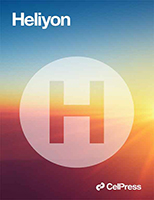
Effects of acupuncture and moxibustion on ulcerative colitis: An overview of systematic reviews
2024 Mar Heliyon Wang D, Wang Q, Wang Y, Li T, Tian M
Systematic Review Moxibustion Acupuncture Ulcerative ColitisAcupuncture and moxibustion therapies have shown effectiveness in treating ulcerative colitis according to the summarised-findings of various systematic reviews and meta-analyses.
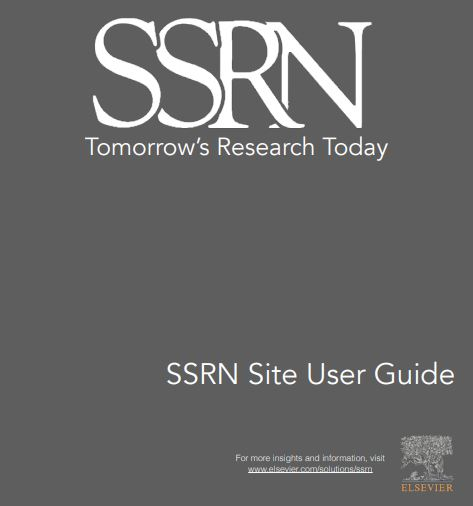
Efficacy and Safety of Different Acupuncture Therapies for Patients with Ulcerative Colitis:A Systematic Review And Network Meta-Analysis
2024 Jan SSRN Electronic Journal Zhang X, Yang S, Jin Y, Cheng X, Lu H, Wu H, et al.
Meta-Analysis Systematic Review Moxibustion Acupuncture Ulcerative ColitisDiverse acupuncture therapies, especially moxibustion, emerged as superior methods for alleviating ulcerative colitis symptoms in clinical practice.
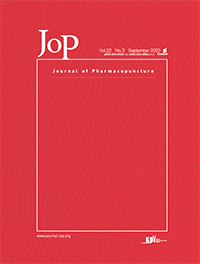
The Effects of Acupuncture on Crohn’s Disease: a systematic review and meta-analysis
2023 Sep 30 Journal of Pharmacopuncture Bae JH, Kang SY, You SE, Jeong HI, Jang S, Kim KH
Meta-Analysis Systematic Review Acupuncture Crohn's DiseaseAcupuncture combined with moxibustion has shown significant benefits in the treatment of mild to moderate Crohn's disease.
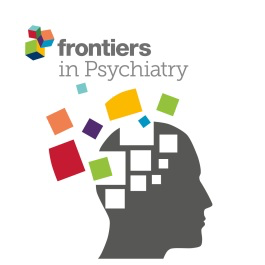
Acupuncture and moxibustion in patients with cancer-related insomnia: A systematic review and network meta-analysis
2023 Feb 16 Frontiers in Psychiatry Ou Y, Lin D, Ni X, Li S, Wu K, Yuan L, et al.
Systematic Review Meta-Analysis AcupunctureAcupuncture, especially TEAS, is safer and more effective than medication for improving sleep quality in cancer related insomnia
Acupuncture and Moxibustion Show Promise for Chronic Renal Insufficiency
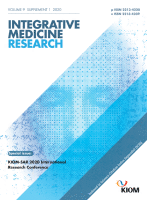
The role of acupuncture and moxibustion in the treatment, prevention, and rehabilitation of patients with COVID-19: A scoping review
2022 Dec Integrative Medicine Research Ren M, Liu Y, Ni X, Kuang Z, Luo X, Zhang Y, et al.
Acupuncture and moxibustion are effective in the treatment of COVID-19 patients to some extent.
Review ArticleResearch insights are moderated by the Research Hub team and offer an at-a-glance overview of interesting research findings.

2024 Heliyon
Acupuncture and moxibustion therapies have shown effectiveness in treating ulcerative colitis according to the summarised-findings of various systematic reviews and meta-analyses.
Systematic Review Acupuncture Ulcerative Colitis
Effects of acupuncture and moxibustion on ulcerative colitis: An overview of systematic reviews
Wang D, Wang Q, Wang Y, Li T, Tian M

2024 SSRN Electronic Journal
Diverse acupuncture therapies, especially moxibustion, emerged as superior methods for alleviating ulcerative colitis symptoms in clinical practice.
Meta-Analysis Acupuncture Ulcerative Colitis
Efficacy and Safety of Different Acupuncture Therapies for Patients with Ulcerative Colitis:A Systematic Review And Network Meta-Analysis
Zhang X, Yang S, Jin Y, Cheng X, Lu H, Wu H, et al.

2023 Journal of Pharmacopuncture
Acupuncture combined with moxibustion has shown significant benefits in the treatment of mild to moderate Crohn's disease.
Meta-Analysis Acupuncture Crohn's Disease
The Effects of Acupuncture on Crohn’s Disease: a systematic review and meta-analysis
Bae JH, Kang SY, You SE, Jeong HI, Jang S, Kim KH

2023 Frontiers in Psychiatry
Acupuncture, especially TEAS, is safer and more effective than medication for improving sleep quality in cancer related insomnia
Systematic Review Acupuncture
Acupuncture and moxibustion in patients with cancer-related insomnia: A systematic review and network meta-analysis
Ou Y, Lin D, Ni X, Li S, Wu K, Yuan L, et al.

2023 Frontiers in Psychiatry
Acupuncture and Moxibustion Show Promise for Chronic Renal Insufficiency
Systematic Review Acupuncture
Acupuncture and moxibustion in patients with cancer-related insomnia: A systematic review and network meta-analysis
Ou Y, Lin D, Ni X, Li S, Wu K, Yuan L, et al.
Review Articles
Review articles summarise and critically evaluate the current state of research on a specific topic or field by synthesising multiple primary research studies.

Effects of acupuncture and moxibustion on ulcerative colitis: An overview of systematic reviews
2024 Mar Heliyon Wang D, Wang Q, Wang Y, Li T, Tian M
Systematic Review Moxibustion Acupuncture Ulcerative ColitisAcupuncture and moxibustion therapies have shown effectiveness in treating ulcerative colitis according to the summarised-findings of various systematic reviews and meta-analyses.

Efficacy and Safety of Different Acupuncture Therapies for Patients with Ulcerative Colitis:A Systematic Review And Network Meta-Analysis
2024 Jan SSRN Electronic Journal Zhang X, Yang S, Jin Y, Cheng X, Lu H, Wu H, et al.
Meta-Analysis Systematic Review Moxibustion Acupuncture Ulcerative ColitisDiverse acupuncture therapies, especially moxibustion, emerged as superior methods for alleviating ulcerative colitis symptoms in clinical practice.

The Effects of Acupuncture on Crohn’s Disease: a systematic review and meta-analysis
2023 Sep 30 Journal of Pharmacopuncture Bae JH, Kang SY, You SE, Jeong HI, Jang S, Kim KH
Meta-Analysis Systematic Review Acupuncture Crohn's DiseaseAcupuncture combined with moxibustion has shown significant benefits in the treatment of mild to moderate Crohn's disease.

Acupuncture and moxibustion in patients with cancer-related insomnia: A systematic review and network meta-analysis
2023 Feb 16 Frontiers in Psychiatry Ou Y, Lin D, Ni X, Li S, Wu K, Yuan L, et al.
Systematic Review Meta-Analysis AcupunctureAcupuncture, especially TEAS, is safer and more effective than medication for improving sleep quality in cancer related insomnia
Acupuncture and Moxibustion Show Promise for Chronic Renal Insufficiency

The role of acupuncture and moxibustion in the treatment, prevention, and rehabilitation of patients with COVID-19: A scoping review
2022 Dec Integrative Medicine Research Ren M, Liu Y, Ni X, Kuang Z, Luo X, Zhang Y, et al.
Acupuncture and moxibustion are effective in the treatment of COVID-19 patients to some extent.
Review ArticleClinical Trials
Clinical trials are research studies that involve people and are conducted to evaluate the safety and efficacy of new treatments or interventions, such as drugs, medical devices, or behavioural therapies.
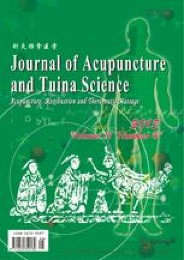
Clinical observation on moxibustion at Baihui (GV20) plus Tuina for children with postnasal drip syndrome
2022 Jun Journal of Acupuncture and Tuina Science Ye K, Dai Q
The clinical efficacy of moxibustion at Baihui (GV20) plus Tuina at the head and face on the basis of nasal spray with Western medicine is more significant than that of Western medicine alone for PNDS in children.
Randomised Controlled Trial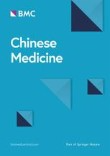
Acupuncture and herbal moxibustion for the treatment of ‘BiQiu’ (allergic rhinitis symptoms) in a Hong Kong Chinese medicine clinic: a randomized controlled trial
2019 Nov 08 Chinese Medicine Yung TY, Zhang H, Tang LC, Zhang L, Law CO, Tam WM, et al.
This study supports that acupuncture could help relieve allergic rhinitis (AR) symptoms, but no evidence on additional treatment effect of herbal moxibustion was found.
Randomised Controlled Trial Hay Fever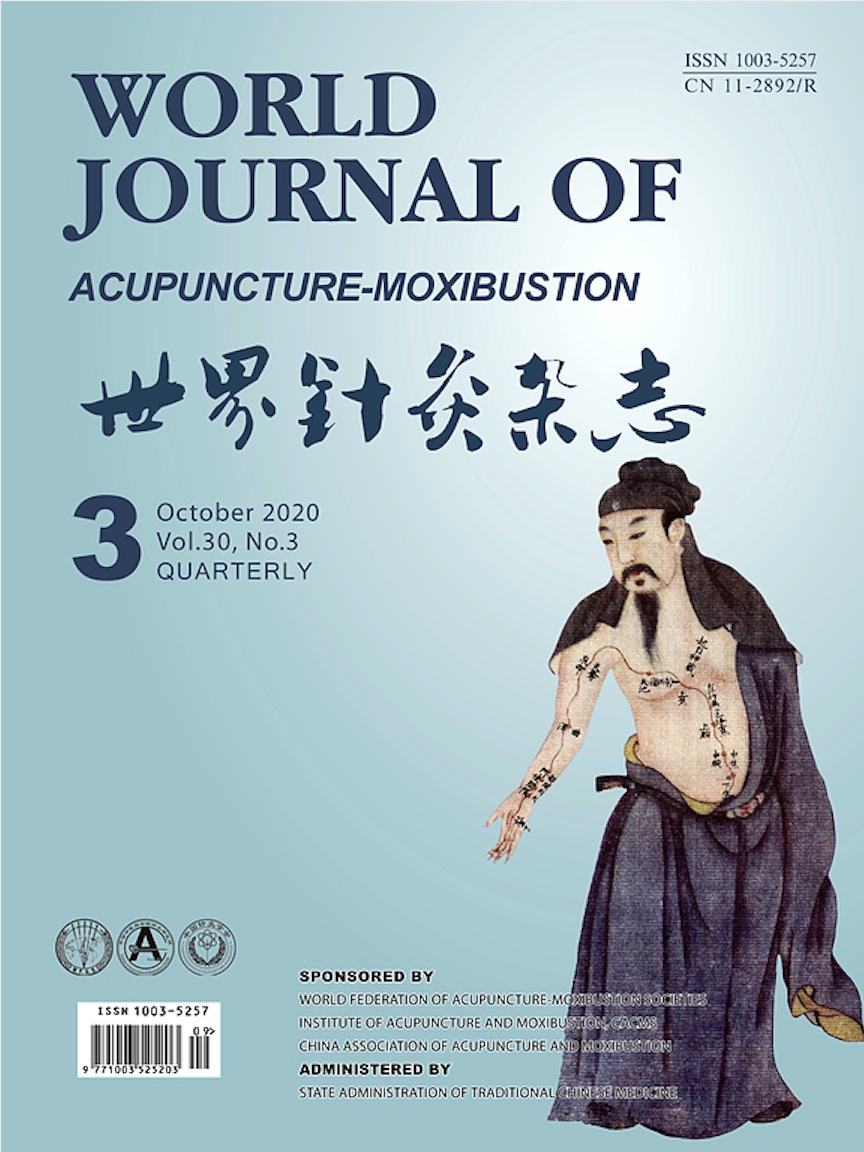
Acupuncture–moxibustion therapy of "banking up original qi and consolidating the foundation" for prevention and treatment of seasonal allergic rhinitis: A randomized controlled trial
2018 Mar World Journal of Acupuncture-Moxibustion MA Y, BU H, LI X, LÜ H, ZHANG X
Acupuncture–moxibustion therapy of "banking up original qi and consolidating the foundation" was effective on prevention and treatment of seasonal allergic rhinitis.
Randomised Controlled Trial Hay Fever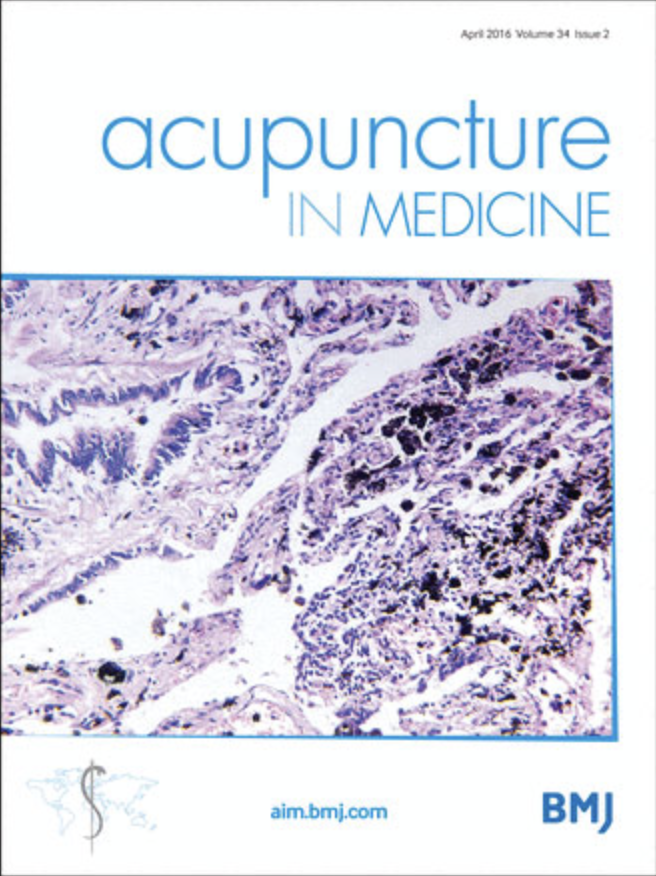
Influence of Acupuncture on the Outcomes of in Vitro Fertilisation When Embryo Implantation Has Failed: A Prospective Randomised Controlled Clinical Trial
2013 Jun Acupuncture in Medicine di Villahermosa DIM, dos Santos LG, Nogueira MB, Vilarino FL, Barbosa CP
In this study, acupuncture and moxibustion increased pregnancy rates when used as an adjuvant treatment in women undergoing IVF, when embryo implantation had failed. The clinical pregnancy rate in the acupuncture group was significantly higher than that in the control and sham groups (35.7% vs 7.1% vs 10.7%; p=0.0169).
Randomised Controlled TrialStudy Protocols
Published study protocols are detailed plans that outline the objectives, methodology, statistical analyses, and organisation of a research study that have been made publicly available for others to review and use as a reference.

Traditional Chinese medicine combined with Moxibustion in the treatment of “long-COVID”: A protocol for systematic review and meta-analysis
2022 Oct 28 Medicine Luo D, Liu B, Wang P, Liao H, Mao S, Chen H, et al.
This study will evaluate whether traditional Chinese medicine combined with moxibustion can effectively treat the symptoms of COVID-19 sequelae. It will also provide evidence whether there is benefit of traditional Chinese medicine combined with moxibustion in the treatment of COVID-19 sequelae. At the same time, our research results will provide a reference for clinical decision-making and guiding development in the future.
Study Protocol Long-COVID Moxibustion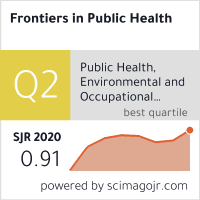
The Effect of Thunder-Fire Moxibustion on Lumbar Disc Herniation: Study Protocol for a Randomized Controlled Trial
2022 Jul 06 Frontiers in Public Health Zhang J, Zhai X, Wang X, Wang L, Tong H, Xian T, et al.
This study will determine whether thunder-fire moxibustion is more effective and safer than acetaminophen in the treatment of patients with lumbar disc herniation (LDH).
Study Protocol
Moxibustion for diarrhea-predominant irritable bowel syndrome
2021 Dec 23 Medicine Dong T, Li X, Ma X, Xue X, Hou Y, Liu Y, et al.
This study will provide evidence for whether moxibustion therapy is beneficial to the treatment of human diarrhea-predominant irritable bowel syndrome.
Study Protocol Diarrhoea Irritable Bowel Syndrome
Efficacy and safety of acupuncture and moxibustion combined with the external application of traditional Chinese medicine in the treatment of primary liver cancer
2021 Oct 29 Medicine Wang S, Xiong Z, Liu Y, Leng Y, Deng H, Shen D, et al.
This study will provide evidence-based guidance for the treatment of PLC with acupuncture and the external application of traditional Chinese medicine and offers new ideas and methods for the treatment of PLC.
Study Protocol Liver Cancer Moxibustion
The effectiveness of acupuncture and moxibustion for treating tenosynovitis
2020 Dec 04 Medicine Huang S, Fan Q, Xiong J, Liao K, Hua F, Xiang J, et al.
Evidence showed that acupuncture is valid for treating De Quervain's tenosynovitis. It also showed that it improves the local blood circulation of the lesion by promoting the repair of muscles, tendons and other soft tissues.
Study Protocol Neck, Shoulder, Arm & Wrist PainPresentation Slides

Systematic Review
Acupuncture and moxibustion therapies have shown effectiveness in treating ulcerative colitis according to the summarised-findings of various systematic reviews and meta-analyses.
Wang D, Wang Q, Wang Y, Li T, Tian M

Meta-Analysis
Diverse acupuncture therapies, especially moxibustion, emerged as superior methods for alleviating ulcerative colitis symptoms in clinical practice.
Zhang X, Yang S, Jin Y, Cheng X, Lu H, Wu H, Ji J

Meta-Analysis
Acupuncture combined with moxibustion has shown significant benefits in the treatment of mild to moderate Crohn's disease.
Bae JH, Kang SY, You SE, Jeong HI, Jang S, Kim KH

Systematic Review
Acupuncture, especially TEAS, is safer and more effective than medication for improving sleep quality in cancer related insomnia
Ou Y, Lin D, Ni X, Li S, Wu K, Yuan L, Rong J, Feng C, Liu J, Yu Y, Wang X, Wang L, Tang Z, Zhao L

Systematic Review
Acupuncture and Moxibustion Show Promise for Chronic Renal Insufficiency
Ou Y, Lin D, Ni X, Li S, Wu K, Yuan L, Rong J, Feng C, Liu J, Yu Y, Wang X, Wang L, Tang Z, Zhao L
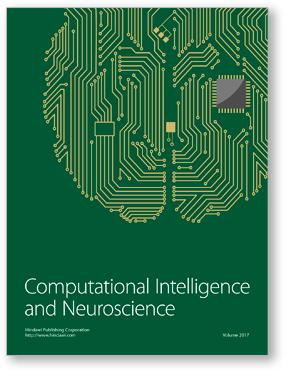
Systematic Review
Meta-analysis of TCM non-drug treatments like acupuncture and massage improved primary insomnia, reducing PSQI scores, and easing anxiety and depression.
Zhuang J, Wu J, Fan L, Liang C

Acupuncture combined with nerve repair significantly enhances the recovery rate in patients with peripheral facial paralysis by aiding nerve regeneration.
Zhenggen Shan

Systematic Review
Acupuncture and moxibustion therapies have greater therapeutic effectiveness for knee osteoarthritis than sham treatments and generic acupuncture/moxibustion treatments.
Ye C, Zhou J, Wang M, Xiao S, Lv A, Wang D
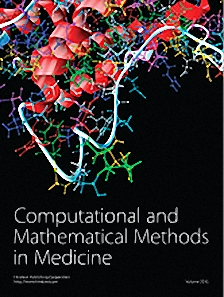
Meta-Analysis
Acupuncture combined with moxibustion showed the best outcomes in terms of efficacy and quality of life improvement for adults with irritable bowel syndrome complicated with diarrhea.
Jiang X, Guo X, Zhou J, Ye S

Systematic Review
Among patients with PCOS, the combined use of acupuncture and moxibustion as a complementary therapy has additional efficacy regarding increased pregnancy and ovulation rates and reduced miscarriage rate.
Li P, Peng J, Ding Z, Zhou X, Liang R
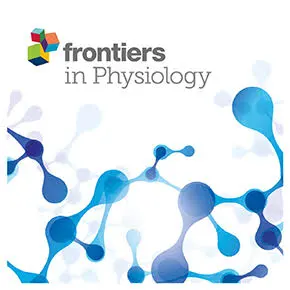
Systematic Review
Moxibustion, a form of traditional Chinese medicine, appears to be an effective and safe treatment for knee osteoarthritis.
Yin S, Zhu F, Li Z, Che D, Li L, Feng J, Zhang L, Huo Z
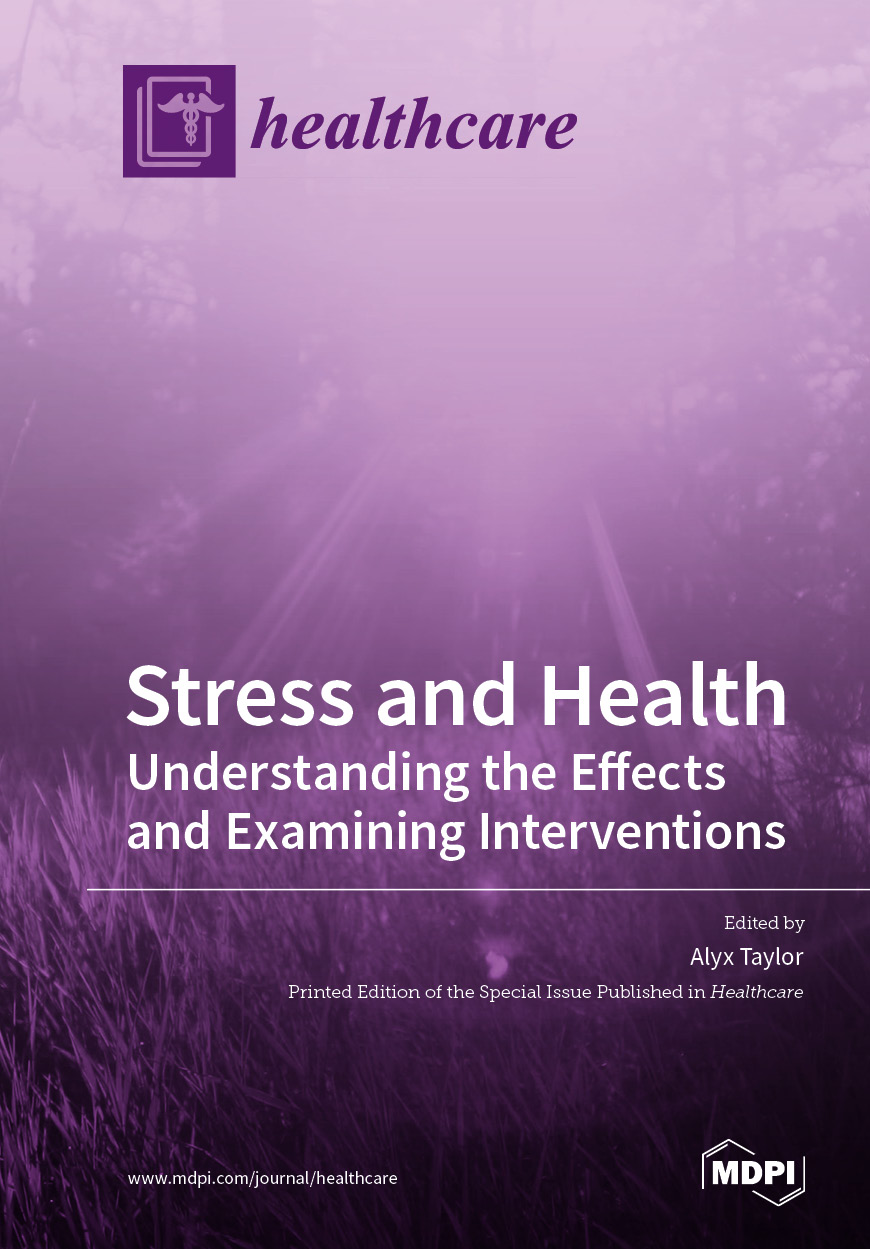
Systematic Review
Our updated systematic review and meta-analysis suggested that moxibustion has a positive effect on correcting breech presentation.
Liao J-A, Shao S-C, Chang C-T, Chai PY-C, Owang K-L, Huang T-H, Yang C-H, Lee T-J, Chen Y-C

Systematic Review
Acupuncture, moxibustion and Chinese herbal medicines are the most commonly used complementary and alternative medicine in the treatment of female infertility.
Feng J, Wang J, Zhang Y, Zhang Y, Jia L, Zhang D, Zhang J, Han Y, Luo S

Treatments according to traditional Chinese medicine syndrome differentiation can provide patients with individualized treatments for chronic fatigue syndrome.
Zhang X, Wang M, Zhou S
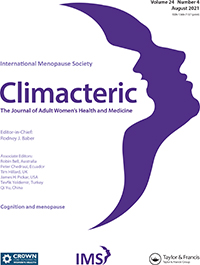
Systematic Review
Menopause symptoms, menopausal hormone therapy (MHT), and acupuncture's efficacy and safety, supported by clinical evidence, with a focus on traditional Chinese medicine practices.
Y. Qin, X. Ruan, R. Ju, J. Pang, G. Zhao & X. Hu

Systematic Review
This systematic review and meta-analysis provides evidence that acupuncture moxibustion therapy is serviceable and safe in treating breast cancer-related lymphedema.
Huimin Jin, Yuying Xiang, Yuqian Feng, Yiting Zhang, Shan Liu, Shanming Ruan, Huamiao Zhou

Systematic Review
The current evidence suggests that acupuncture and moxibustion is more effective than ibuprofen or Fenbid in the treatment of primary dysmenorrhoea.
Jun Yang, Jun Xiong, Ting Yuan, Xue Wang, Yunfeng Jiang, Xiaohong Zhou, Kai Liao, Lingling Xu

Systematic Review
Chinese herbal medicine combined with moxibustion might be beneficial for treating PCOS, and the treatment might improve the therapeutic effects of conventional western medications including clomiphene citrate, oral contraceptives, and/or metformin.
Kwon, Chan-Young, Lee, Boram, Park, Kyoung Sun

Systematic Review
Moxibustion was found to be an effective and safe treatment improving symptoms and quality of life in patients with Benign Prostatic Hyperplasia.
Bae G, Lee S, Hong J, Lee I, Kim S, Choi J, Han C, Yun Y, Park S, Kwon J
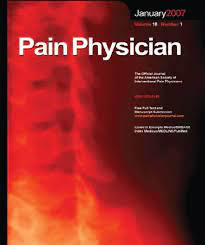
Meta-Analysis
The existing evidence suggests that most acupuncture therapies, including acupuncture combined with other therapies, are effective in decreasing pain and in improving physical function.
Li X, Wang R, Xing X, Shi X, Tian J, Zhang J, Ge L, Zhang J, Li L, Yang K.
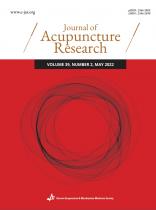
Systematic Review
Acupuncture, moxibustion, and laser acupuncture are effective as conservative therapies for the treatment of De Quervain's Stenosing Tenosynovitis.
Kong HJ, Kang JH, Yun GW, Oh SY, Lee H
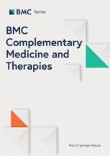
Systematic Review
Acupuncture and moxibustion were found to be more effective than Chinese herbal medicine, western medicine and placebo treatment (sham-acupuncture) in relieving symptoms of chronic fatigue syndrome.
Wang T, Xu C, Pan K, Xiong H.

Systematic Review
Moderate quality studies suggest that acupuncture is more effective than sham acupuncture for lateral elbow pain.
Gadau M, Yeung WF, Liu H, Zaslawski C, Tan YS, Wang FC, et al

Systematic Review
Acupuncture and moxibustion therapy show greater effectiveness than oral sulphasalazine in treating inflammatory bowel diseases.
Ji, J., Lu, Y., Liu, H., Feng, H., Zhang, F., Wu, L., Cui, Y., & Wu, H.
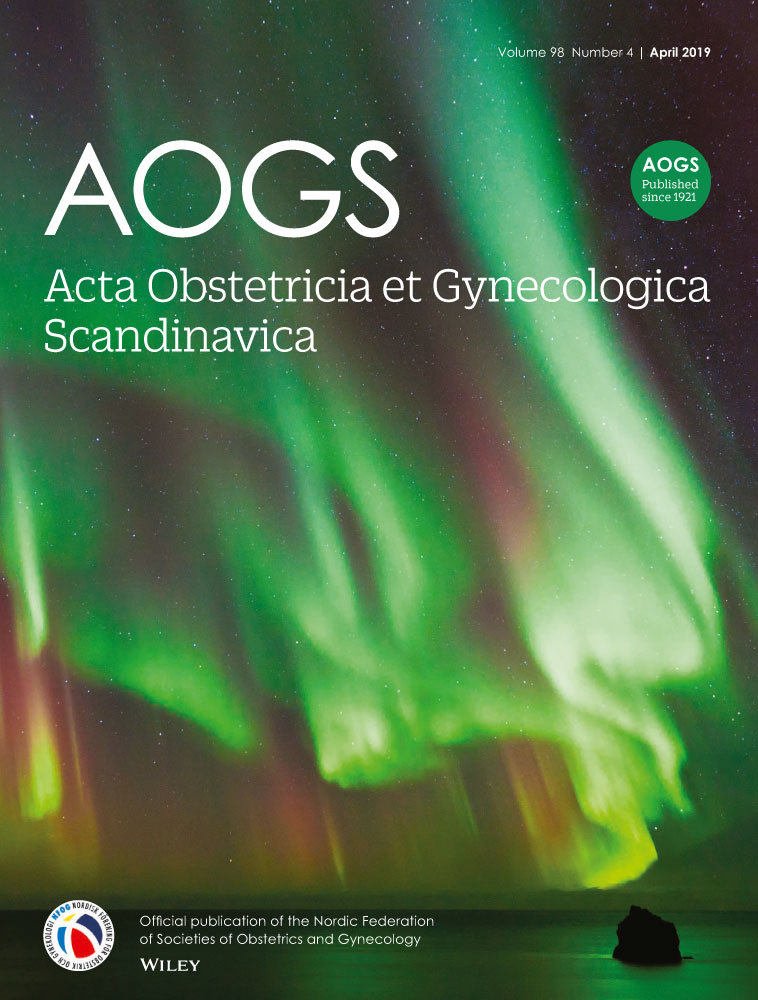
Systematic Review
Acupuncture-related therapies may have potential as an intervention for primary dysmenorrhea.
Yang, H., Liu, C.-Z., Chen, X., Ma, L.-X., Xie, J.-P., Guo, N.-N., Ma, Z.-B., Zheng, Y.-Y., Zhu, J., & Liu, J.-P.
Executive Summary
Write an executive summary in the form of a blog article on the topic of "Research into Chinese medicine treatment for Moxibustion" summarising the research below and using language that can be easily understood by patients and avoiding medical jargon using a professional and caring tone of voice.
Write an executive summary in the form of a blog article on the topic of "Researched Chinese medicine treatments for Moxibustion" summarising the research below in an objective and easy to understand way, and using language that can be easily understood by patients. Group the article into Chinese medicine treatments first, followed by nutrition and other treatments. Avoid using medical jargon and use a professional and caring tone of voice.
Write me a concise but easy to understand executive summary on the topic of "Chinese medicine treatments for Moxibustion" based on the following research that I will give you. Your summary should be 2 paragraphs long in Australian English spelling and include references to the studies.
A Systematic Review published in 2024 in the journal Heliyon found that Acupuncture and moxibustion therapies have shown effectiveness in treating ulcerative colitis according to the summarised-findings of various systematic reviews and meta-analyses. Methodology: This evaluative study used an extensive and systematic methods to search data from seven different databases. The selected data were further refined by using different screening and evaluation frameworks like AMSTAR-2, PRISMA, ROBIS, and GRADE systems. These were used to determine the methodological quality, reporting quality, risk of bias, and the quality of evidence in the selected studies. Discussion of results: After critical evaluation, the study found ten relevant reviews and analyses that showed potential for acupuncture and moxibustion therapies being effective in ulcerative colitis treatment. However, many the identified studies were reported to have several problems in their overall design and quality of outcomes. The researchers therefore stress caution when interpreting these results due to the lack of high-quality evidence in the existing studies.
A Meta-Analysis published in 2024 in the journal SSRN Electronic Journal found that Diverse acupuncture therapies, especially moxibustion, emerged as superior methods for alleviating ulcerative colitis symptoms in clinical practice. Methodology: The researchers carried out a systematic review and network meta-analysis of clinical efficacy of various acupuncture therapies for ulcerative colitis patients. They accomplished this by sourcing for Clinical Randomized Controlled trial articles from databases such as PubMed, Embase, Cochrane Library, and other data knowledge service platforms, all of which were independently reviewed by two researchers. Several quality assessments were made through Review Manager software, and the meta-analysis was conducted with Stata 16 software. Interventions examined in the analysis included acupuncture, moxibustion, acupoint catgut embedding, and combinations of these therapies with Western medicine. Discussion of results: 52 articles encompassing 3924 patients participated in randomized control trials. The investigation revealed a range of interventions, including different acupuncture therapies and combinations of these therapies with Western medicine. Namely, moxibustion, either on its own or combined with Western medicine, consistently surfaced as top-ranked for overall effectiveness and specific outcomes. Moreover, moxibustion displayed impressive performance in reducing adverse reactions and recurrence rates. Thus, various acupuncture therapies were confirmed as safe and effective for the treatment of ulcerative colitis, with moxibustion emerging as the most effective.
A Meta-Analysis published in 2023 in the journal Journal of Pharmacopuncture found that Acupuncture combined with moxibustion has shown significant benefits in the treatment of mild to moderate Crohn's disease. In this systematic review, the researchers conducted a comprehensive search of 12 databases for randomized controlled trials on the impact of acupuncture on Crohn's disease. Three independent reviewers assessed the risk of bias for each study. The level of evidence from meta-analyses was evaluated using the Grading of Recommendations, Assessment, Development, and Evaluation methodology. The review included a total of 12 studies. Findings suggest that acupuncture combined with moxibustion, a traditional East Asian treatment involving burning a small bunch of herbs on particular points on the body, had an effect on the treatment outcomes for patients with mild to moderate Crohn's disease when compared to a group given sham acupuncture and sham moxibustion treatments. Notably, findings on the effectiveness of acupuncture treatment only, without the addition of moxibustion, were less clear. It is also important to emphasize that this review was firmly focused on the benefits of the treatment on patients with mild to moderate symptoms of Crohn's disease.
A Systematic Review published in 2023 in the journal Frontiers in Psychiatry found that Acupuncture, especially TEAS, is safer and more effective than medication for improving sleep quality in cancer related insomnia Acupuncture methods like transcutaneous electrical acupuncture stimulation (TEAS) and acupuncture+moxibustion were better for sleep than medication. Acupuncture had fewer side effects than medication with positive impact on canner-related insomnia linked to factors like melatonin regulation. Amongst all treatment types, TEAS was probably the more effective.
A Systematic Review published in 2023 in the journal Frontiers in Psychiatry found that Acupuncture and Moxibustion Show Promise for Chronic Renal Insufficiency Acupuncture and moxibustion emerge as effective and safe interventions for chronic renal insufficiency, with Transcutaneous Electrical Acupuncture Stimulation showing the highest potential for efficacy.
A Systematic Review published in 2022 in the journal Computational Intelligence and Neuroscience found that Meta-analysis of TCM non-drug treatments like acupuncture and massage improved primary insomnia, reducing PSQI scores, and easing anxiety and depression. The effectiveness of Traditional Chinese Medicine (TCM) non-drug therapies (acupuncture, moxibustion, massage, and auricular point pressing) were evaluated in treating primary insomnia. Results showed that TCM non-drug therapies significantly improved the PSQI score in insomnia patients, with a higher effective rate compared to the control groups. These therapies also demonstrated improvements in anxiety and depression.
A published in 2022 in the journal Frontiers in Pharmacology found that Acupuncture combined with nerve repair significantly enhances the recovery rate in patients with peripheral facial paralysis by aiding nerve regeneration. The research applied traditional acupuncture therapy in conjunction with nerve repair in treating peripheral facial paralysis. Examination via a microscope revealed the extent of the clinical effectiveness of combined nerve repair and acupuncture during the acute stage of the facial paralysis. Following the artificial nerve repair procedure performed 21 days prior, the nerve injury demonstrated varying levels of recovery. Furthermore, the myelin sheath, an insulating layer that forms around nerves, was found to be gradually developing and encompassing the new nerve fibers. The study found the inflammation that naturally occurs when treating nerve defects to be an inevitable process. However, moderate acupuncture was found to significantly aid and promote the repair of peripheral nerve defects. This research revealed that the combination of acupuncture and nerve repair led to outstanding improvements in the treatment of peripheral facial paralysis. The study showed that this combined treatment significantly increased the patient recovery rate. This new treatment technology was found to be simple, safe, effective, and presents a valuable enhancement to the existing treatment plans for peripheral facial paralysis.
A Systematic Review published in 2022 in the journal Evidence-Based Complementary and Alternative Medicine found that Acupuncture and moxibustion therapies have greater therapeutic effectiveness for knee osteoarthritis than sham treatments and generic acupuncture/moxibustion treatments. The researchers queried PubMed, Embase, and CNKI databases to find qualifying trials conducted between 2017 and 2022. All trials that employed acupuncture or moxibustion for knee osteoarthritis patients were included. The process of choosing studies to be included and extracting relevant data from them was carried out by two researchers independently. The data were analyzed using R 4.1.1. The meta-analysis included seventeen trials. The results of the analysis identified a correlation between several common forms of acupuncture and moxibustion therapies, as observed via a network meta-analysis. The findings showed that treatments involving acupuncture or moxibustion were more effective than sham treatments. Furthermore, when compared with standard acupuncture or moxibustion procedures, specific acupuncture or moxibustion procedures proved to be more effective.
A Meta-Analysis published in 2022 in the journal Computational and Mathematical Methods in Medicine found that Acupuncture combined with moxibustion showed the best outcomes in terms of efficacy and quality of life improvement for adults with irritable bowel syndrome complicated with diarrhea. The study was conducted by searching major databases, including PubMed, The Cochrane Library, Embase, and database from China, for randomized controlled trials. These trials explored the effects of acupuncture and moxibustion on individuals suffering from irritable bowel syndrome complicated with diarrhea. The selected studies underwent a rigorous bias assessment and their data were analyzed using Stata 16.0 statistical software. The analysis encompassed 21 studies overall, considering 1626 patients undergoing 8 different therapeutic measures. The study found that treatments such as acupuncture, warming needle moxibustion, and a combination of acupuncture with sandwiched or heat-sensitive moxibustion revealed significantly improved outcomes when compared to the drug pinaverium bromide. On the other hand, pinaverium bromide demonstrated the lowest efficacy and effect on quality of life. The most frequently used acupuncture points were GV20, GV29, ST 25, ST37, ST36, SP6, LR3, and CV12.
A Systematic Review published in 2022 in the journal Evidence-Based Complementary and Alternative Medicine found that Among patients with PCOS, the combined use of acupuncture and moxibustion as a complementary therapy has additional efficacy regarding increased pregnancy and ovulation rates and reduced miscarriage rate. The systematic review included 25 RCTs assessing the efficacy and safety of acupuncture combined with moxibustion in treating PCOS, and all of them contributed data to the meta-analysis. Evidence of an association between acupuncture and moxibustion therapy and greater increases in the pregnancy rate and ovulation rate and greater reductions in the miscarriage rate and ovarian volume was found. Additionally, patients receiving acupuncture and moxibustion also exhibited greater improvements in some sex hormones (LH level, LH/FSH ratio and total testosterone level) and indicators related to metabolic disorders (fasting insulin level and BMI). Nevertheless, acupoint stimulation therapy had no significant effect on the levels of FSH, DHEAS, or oestradiol. In this systematic review, the pregnancy rate among patients who received acupuncture combined with moxibustion reached 50.9%. This value represents a substantial increase compared to that of patients who did not receive acupuncture (27.5%), with an RR of 1.81 and a 4.9% additional increase compared with patients receiving acupuncture + active drugs in the PCOSAct trial (46.0%).
A Systematic Review published in 2022 in the journal Frontiers in Physiology found that Moxibustion, a form of traditional Chinese medicine, appears to be an effective and safe treatment for knee osteoarthritis. The researchers used a series of databases including Embase, PubMed, Web of Science, Cochrane Library, and others to carry out a comprehensive evaluation of previous systematic reviews on the treatment of knee osteoarthritis with moxibustion. They employed the Measurement Tool to Assess Systematic Reviews 2 to assess the methodological quality, Preferred Reporting Item for Systematic Reviews and Meta-analyses for reporting quality, and ROBIS Tool to evaluate the risk of bias in the systematic reviews. They also assessed the strength of evidence with the Grading of Recommendations Assessment, Development and Evaluation tool and carried out a meta-analysis of the total effectiveness rate. From this process, 10 systematic reviews were selected that had met their criteria. These reviews included the results of 57 randomized controlled trials involving a total of 5,149 participants. However, these reviews were found to have several critical deficiencies, scoring low on the quality scale used. Despite this, moxibustion, and its combination treatment, were shown to improve the total effectiveness rate in knee osteoarthritis. Eight of the reviews had reported adverse events but none were classified as serious in either the moxibustion group or control group.
A Systematic Review published in 2021 in the journal Healthcare found that Our updated systematic review and meta-analysis suggested that moxibustion has a positive effect on correcting breech presentation. Our study found that acupuncture-type interventions (including moxibustion, acupuncture, and moxibustion plus acupuncture) at BL67 increase the frequency of cephalic presentation at birth. Moxibustion seemed to be more effective in correcting non-vertex presentation in the Asian population than in the non-Asian population. Our study included only RCTs that were eligible and up-to-date. To minimalize the impact of potential bias, a sensitivity analysis was performed; such an analysis was not reported as being conducted in most previous studies. After comparing the net effects of different acupuncture-type interventions before and after sensitivity analysis, a positive effect on correcting breech presentation, particularly with moxibustion alone or in combination with acupuncture, is consistent. Our findings provide robust support of the effectiveness of moxibustion on correcting breech presentation.
A Systematic Review published in 2021 in the journal Evidence-Based Complementary and Alternative Medicine found that Acupuncture, moxibustion and Chinese herbal medicines are the most commonly used complementary and alternative medicine in the treatment of female infertility. Currently, complementary and alternative medicine (CAM), as a new treatment for infertility, is gradually challenging the dominant position of traditional therapies in the treatment of infertility. CAM claims that it can adjust and harmonize the state of the female body from a holistic approach to achieve a better therapeutic effect and has been increasingly used by infertile women.
A published in 2020 in the journal Evidence-Based Complementary and Alternative Medicine found that Treatments according to traditional Chinese medicine syndrome differentiation can provide patients with individualized treatments for chronic fatigue syndrome. Currently, there are many methods for treating CFS with TCM, showing its advantages. On one hand, treatments according to syndrome differentiation are diverse and involve herbal decoctions and proprietary Chinese medicines. External treatments include moxibustion, acupuncture, tuina, cupping, and other treatments. Combination therapies include two or more external treatments combined and internal and external treatments combined, which are often better than monotherapies and can remedy deficiencies. However, the clinical manifestations of CFS are different. Although fatigue is the main manifestation, there are individual differences in the appearance of insomnia or muscle pain in some patients. Treatments according to syndrome differentiation can provide patients with individualized treatments. On the other hand, TCM often has the advantages of simplicity, effectiveness, convenience, and a lower cost.
A Systematic Review published in 2020 in the journal Climacteric found that Menopause symptoms, menopausal hormone therapy (MHT), and acupuncture's efficacy and safety, supported by clinical evidence, with a focus on traditional Chinese medicine practices. This passage discusses menopause-related symptoms and various treatment options available. Menopausal hormone therapy (MHT) is commonly recommended for managing these symptoms, but non-hormonal therapies like acupuncture are becoming popular alternatives, especially for those unsuitable for MHT. Acupuncture, a traditional Chinese practice, has gained support for effectively improving menopause symptoms, backed by clinical evidence. The passage also highlights the authors' clinical experience and studies from Tsinghua University Chuiyangliu Hospital in Beijing, China, emphasizing the safety of acupuncture in traditional Chinese medicine.
A Systematic Review published in 2020 in the journal Evidence-Based Complementary and Alternative Medicine found that This systematic review and meta-analysis provides evidence that acupuncture moxibustion therapy is serviceable and safe in treating breast cancer-related lymphedema. Twelve RCTs with 778 participants were identified for further analysis. On account of the evidence we assessed, the conclusion that can be reached is that acupuncture moxibustion therapy (AMT) could be considered as an alternative option to enhance the efficacy of breast cancer-related lymphedema (BCRL) treatment. Eight trials showed that AMT combined with physiotherapy or functional exercise for the treatment of BCRL significantly improved the total effective rate, in comparison with using conservative treatment alone. Based on changes in the difference of upper limbs before and after treatment, five trials suggested that AMT or AMT plus physical therapy was more effective than physical therapy alone. The differences in arm dimension changes were smaller in patients treated with AMT than those in untreated patients. These results showed that acupuncture and moxibustion enhance the beneficial effects of physical therapy. Moreover, pooled data from five studies showed that AMT (including cupping) had advantage over Western medicine and physiotherapy at improving the quality of life among BCRL patients. Among the included studies, only one trial clearly recorded the adverse events that occurred during the treatment period. It can be said that AMT is basically safe and hardly bring about harm to the human body. Several studies have taken moxibustion as an intervention measure. The results indicated that moxibustion efficiently alleviated the symptoms of edema in BCRL patients, without any obvious adverse events. Hence, after several times of professional guidance, patients could carry out moxibustion by themselves, which is free of time and place restrictions. These findings indicated that the efficacy of AMT was higher compared to other conservative treatments. Apart from this, since the adverse events of AMT were negligible, it was extraordinary attractive to women with BCRL.
A Systematic Review published in 2020 in the journal Evidence-Based Complementary and Alternative Medicine found that The current evidence suggests that acupuncture and moxibustion is more effective than ibuprofen or Fenbid in the treatment of primary dysmenorrhoea. This overview provided a comprehensive overview of the evidence on the effectiveness and safety of acupuncture and moxibustion for PD. Evidence of moderate quality suggested that acupuncture and moxibustion had a positive effect on indomethacin or Fenbid in treating PD. Low-quality evidence showed that compared to NSAIDs, acupuncture and moxibustion could relieve PD related pain with less adverse effects, which needs to be further researched. The adverse effects related to the acupuncture and moxibustion were mild, and they included dizziness, fainting, or minimal bleeding after acupuncture.
A Systematic Review published in 2018 in the journal Medicine found that Chinese herbal medicine combined with moxibustion might be beneficial for treating PCOS, and the treatment might improve the therapeutic effects of conventional western medications including clomiphene citrate, oral contraceptives, and/or metformin. According to current evidence, oriental herbal medicine combined with moxibustion might be beneficial for treating PCOS. Moreover, the treatment might improve the therapeutic effects of conventional WMs including clomiphene citrate, OCPs, and/or metformin. However, the findings should be interpreted with great caution, owing to poor methodological quality of the included studies, especially the high risks of selection bias, performance bias, and detection bias. Further larger, high-quality, rigorous RCTs should be conducted in this regard.
A Systematic Review published in 2018 in the journal The Journal of Internal Korean Medicine found that Moxibustion was found to be an effective and safe treatment improving symptoms and quality of life in patients with Benign Prostatic Hyperplasia. The study used a randomized controlled trial method, comparing the effects of moxibustion and placebo treatment on Benign Prostatic Hyperplasia. Participants were divided into two groups: one that received the moxibustion treatment on specific acupuncture points, and another placebo group that received a sham treatment mimicking moxibustion without therapeutic effect. Outcome measures assessed were International Prostate Symptom Score, maximum urinary flow rate, quality of life index, and occurrence of adverse events. The study found significant improvements in the moxibustion group in regards to the measured prostate symptom score and urinary flow rate when compared to the placebo group. The quality of life index was also significantly higher for the moxibustion group. Moreover, adverse events were rare and mild in both participant groups.
A Meta-Analysis published in 2017 in the journal Pain Physician found that The existing evidence suggests that most acupuncture therapies, including acupuncture combined with other therapies, are effective in decreasing pain and in improving physical function. Thirty-three trials with 1,692 patients were included. Patients were allocated to 22 kinds of interventions, of which dry needling and manual acupuncture was the most frequently investigated intervention. Compared with placebo-sham acupuncture, scraping combined with warming acupuncture and moxibustion was found to be more effective for decreasing pain intensity; miniscalpel-needle was more effective for increasing the PPT; trigger points injection with bupivacaine was associated with the highest risk of adverse event; and only EA showed a significant difference in the ROM.
A Systematic Review published in 2017 in the journal The Acupuncture found that Acupuncture, moxibustion, and laser acupuncture are effective as conservative therapies for the treatment of De Quervain's Stenosing Tenosynovitis. A total of 51 studies, consisting of 28 case reports and 23 RCTs, were selected and analyzed according to the research methods defined in this paper. The most common treatments used in the 51 studies were Acupuncture (60.78%) followed by Acupotomy (13.73%), Pharmacopuncture (9.8%), Moxibustion (7.84%) and Laser acupuncture (7.84%). The most commonly used acupoints for acupuncture treatment of DQST were Ashi points and acupoints, such as LI05, LI11, LI04, LI10 and LI06 in the Large Intestine Meridian.
A Systematic Review published in 2017 in the journal BMC Complementary Medicine and Therapies found that Acupuncture and moxibustion were found to be more effective than Chinese herbal medicine, western medicine and placebo treatment (sham-acupuncture) in relieving symptoms of chronic fatigue syndrome. A total of 31 randomized controlled trials (RCTs) were enrolled in analyses. In traditional direct meta-analysis, we found that in comparison to Chinese herbal medicine, CbAM (combined acupuncture and moxibustion, which meant two or more types of acupuncture and moxibustion were adopted) had a higher total effective rate. Compared with Chinese herbal medicine, western medicine and sham-acupuncture, SAM (single acupuncture or single moxibustion) had a higher total effective rate. In addition, compared with SAM, CbAM had a higher total effective rate. In network meta-analyses, similar results were recorded. Subsequently, we ranked all treatments from high to low effective rate and the order was CbAM, SAM, Chinese herbal medicine, western medicine and sham-acupuncture. In the treatment of CFS, CbAM and SAM may have better effect than other treatments. However, the included trials have relatively poor quality, hence high quality studies are needed to confirm our finding.
A Systematic Review published in 2014 in the journal BMC Complementary Medicine and Therapies found that Moderate quality studies suggest that acupuncture is more effective than sham acupuncture for lateral elbow pain. All studies had at least one domain rated as high risk or uncertain risk of bias in the Cochrane risk of bias tool. Results from three RCTs of moderate quality showed that acupuncture was more effective than sham acupuncture. Results from 10 RCTs of mostly low quality showed that acupuncture or moxibustion was superior or equal to conventional treatment, such as local anesthetic injection, local steroid injection, non-steroidal anti- inflammatory drugs, or ultrasound. There were six low quality RCTs that compared acupuncture and moxibustion combined with manual acupuncture alone, and all showed that acupuncture and moxibustion combined was superior to manual acupuncture alone.
A Systematic Review published in 2013 in the journal Evidence-Based Complementary and Alternative Medicine found that Acupuncture and moxibustion therapy show greater effectiveness than oral sulphasalazine in treating inflammatory bowel diseases. For the methodology, seven significant databases, both domestic and international, were meticulously searched to accumulate and examine randomized controlled trials (RCTs). These trials specifically compared acupuncture and moxibustion as the main intervention to pharmacotherapy in treating Inflammatory bowel diseases (IBD). In total, 43 RCTs were incorporated and examined, 10 of which distinctly compared oral sulphasalazine with acupuncture or/and moxibustion treatments. In regards to the results received, the study found that acupuncture and moxibustion therapy displayed superior results when compared with oral sulphasalazine. This conclusion is drawn from the meta-analysis of the 10 trials focusing specifically on these treatments. Even though the systemic review presented several limitations and a definitive conclusion wasn't reached, it still laid groundwork for the potential effectiveness of acupuncture and moxibustion therapy in managing Inflammatory bowel diseases.
A Systematic Review published in 2010 in the journal Acta Obstetricia et Gynecologica Scandinavica found that Acupuncture-related therapies may have potential as an intervention for primary dysmenorrhea. This passage provides a systematic review of studies on acupuncture-related therapies for primary dysmenorrhea (menstrual pain). The review included 32 trials with a total of 3,910 patients. These trials compared acupuncture, acupressure, and moxibustion to various control treatments. The results showed conflicting findings regarding the effectiveness of acupuncture-related therapies, with one trial suggesting acupuncture was significantly more effective than control groups. However, the review also identified several limitations in the trials, including issues with study design, outcome measures, trial heterogeneity, and potential publication bias. The authors suggest that while acupuncture-related therapies may hold promise for treating dysmenorrhea, further well-designed trials are needed to provide more definitive evidence. They also recommend improvements in study methodologies and the application of international outcome measures for more accurate and comparable results.
Moderation Tools
Topic
Sign In
Users not signed in are limited to viewing the 5 most recent items of content.